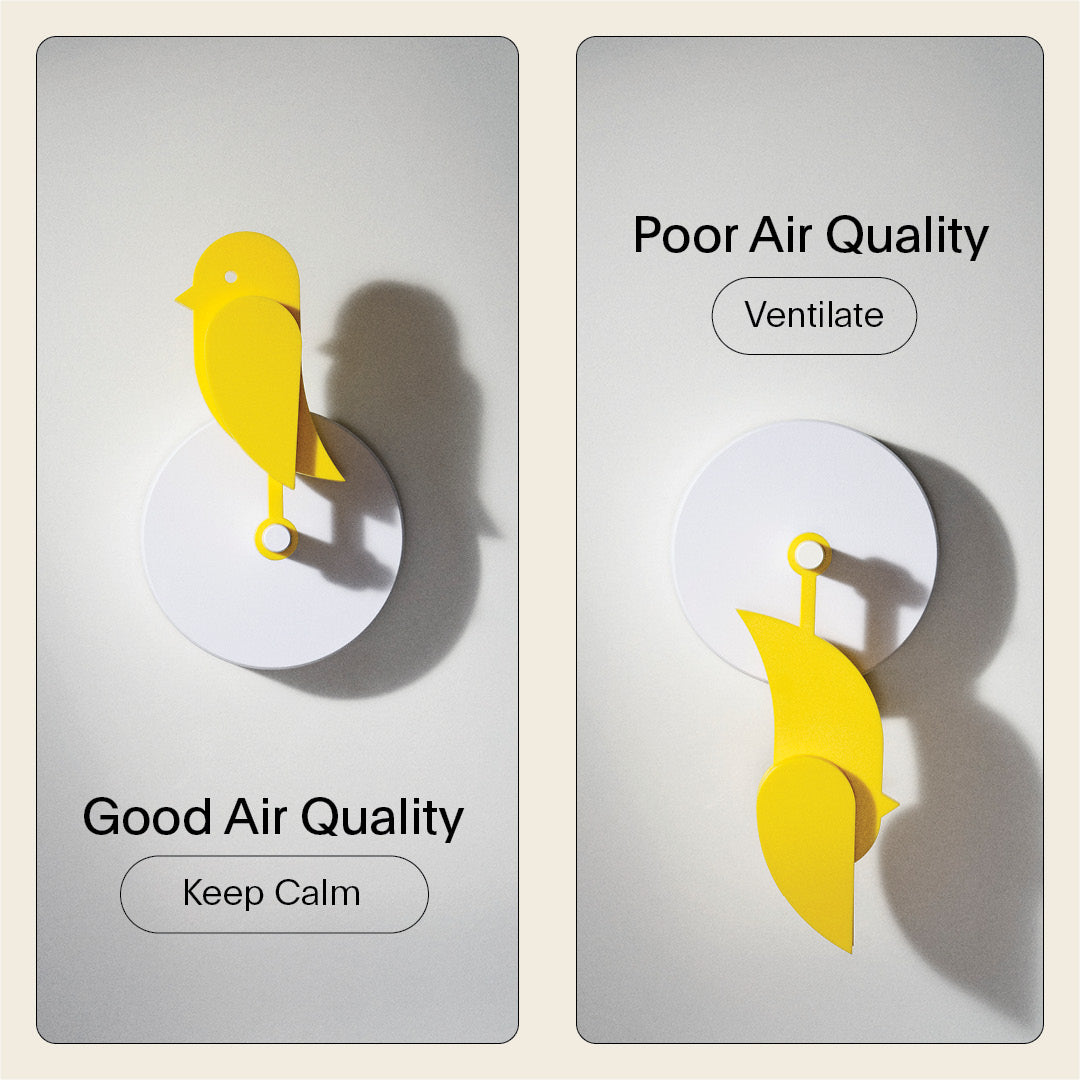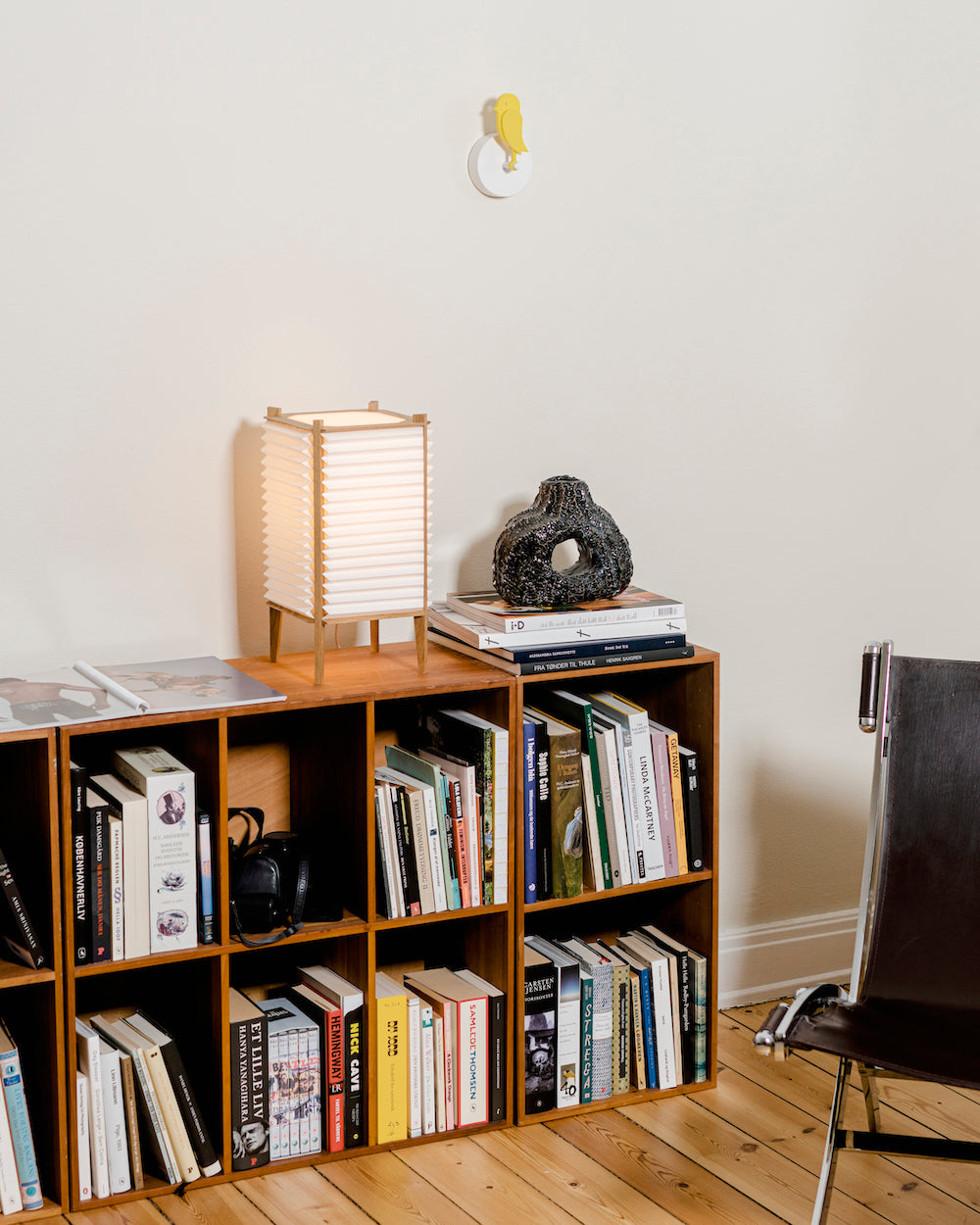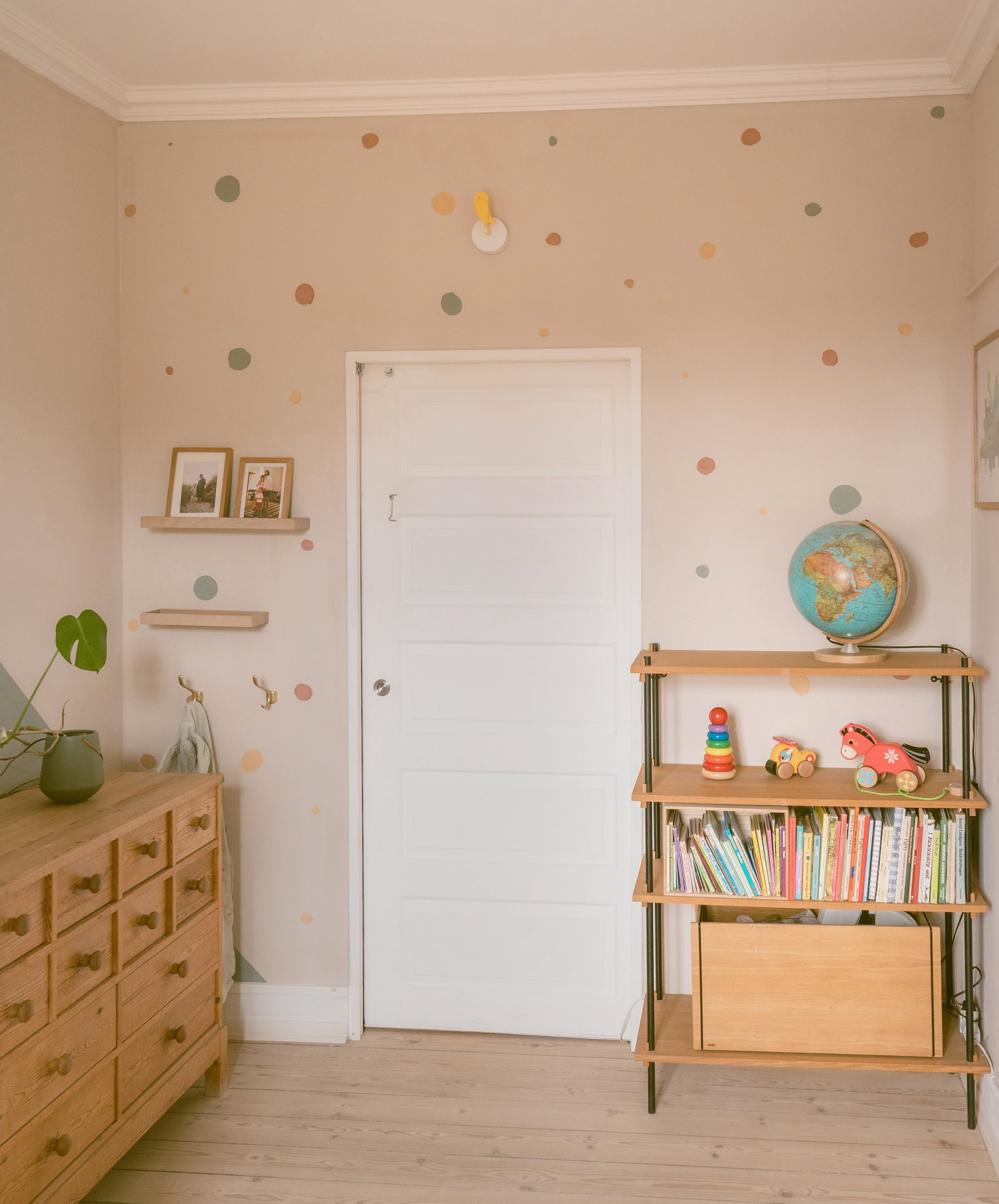Written by Hans Augustenborg
June 18, 2024 — 10 minute reading time

Do you frequently experience headaches, fatigue, or respiratory irritation?
Then it might be the air quality that's causing trouble. Indoor air quality and indoor climate are overlooked health factors in our daily lives – and researchers in the field are clear: We should give air quality the same focus as sleep, diet, and exercise.
Read on as we go through what air quality is and how you can measure and improve it through seven concrete steps.
What is Air Quality?
Air quality refers to both outdoor and indoor air.
In this article, we focus on indoor air quality as it significantly impacts our well-being. In fact, studies show that indoor air is more polluted than outdoor air, and we spend about 90% of our time indoors.
Air quality and indoor climate are not just hot air; they are something we need to address to stay healthy and well.
In an interview with Weekendavisen, Pawel Wargocki, a researcher at DTU Sustain, describes how we should treat air quality on par with fire safety:
"We spend huge sums of money on fireproofing our buildings, and we do it without question because we accept that it's necessary for our safety. We should consider ventilation and air quality in our buildings the same way. We should think of clean air as we do of clean water and fresh food. We don't compromise on those, and we shouldn't compromise on indoor climate either."
Poor Air Quality Makes Us Dull and, at Worst, Sick
Imagine a typical workday at the office.
Many people are gathered, it's nearing 3:30 PM, and you haven't been outside since this morning. You haven't aired out the room either.
You start feeling your concentration drop, your head pounding, your eyes stinging. In many cases, it's one thing: poor air quality.
And these are "here and now" symptoms. In the long run, poor air quality can contribute to serious illnesses such as asthma and lung cancer.
It is estimated that 22,000 healthy life years are lost each year due to poor indoor climate in Denmark. Even though building construction and location play a role, our own behavior also matters.
CO2 in Exhaled Air Negatively Affects Air Quality
CO2 is the most commonly used indicator of poor air quality in rooms where the main source of pollution is humans.
That is, rooms with normal activity such as living rooms, bedrooms, offices, meeting rooms, or classrooms. There may well be other sources of pollution, but it's often the people who contribute to the degraded indoor climate.
There is CO2 in human exhaled air, and when many people are gathered for several hours without fresh air, the air quality deteriorates.
Your Birdie reacts to CO2 levels precisely.
It thrives on fresh air. And when it's no longer fresh, it drops dead when the CO2 level in your home becomes too high.
When you air out, you replace the used air with fresh new oxygen – and then Birdie comes back to life.
What Else Can Affect Air Quality?
While measuring air quality via CO2 is the best indicator of poor air quality, there are other factors that affect indoor climate.
These include:
Fine particles
There are ultrafine particles everywhere in the air that can be harmful to us. They come from both outdoor air pollution, which infiltrates homes, and from sources like wood-burning stoves and cooking.
Too high or low humidity
Good air quality depends on humidity, which should neither be too dry nor too moist. A rule of thumb is to keep humidity between 40-60%.
Candles
Burning candles emit small particles, which can negatively affect air quality. Candle particles contain lead, nickel, and tar substances, which can cause headaches, among other things.
Tobacco smoke
Unlike 20 years ago, we now know how harmful tobacco smoke and passive smoking are to our health – and air quality. It should therefore never be part of indoor climate. Tobacco smoke also increases the level of CO2 in the air.
Radon
Radioactive radiation from radon can seep up from the ground if there are leaks in your home's floor construction. This can have serious consequences, such as causing cancer if you are exposed to it for several years. You can check if you live in an area with high radon levels.
Furniture and toys emitting gases
New furniture and toys contain chemical substances that are released into the air – also called off-gassing. Some substances are harmless, while others can be harmful to health.
Dust
Cleaning is an important part of creating good air quality. Chemicals from electronics, for example, bind to dust and spread more easily.
Health Effects of Poor Air Quality
Measuring air quality is an important part of preventing the health risks associated with poor indoor climate.
So what are the consequences of poor indoor climate?
The milder symptoms include:
- Fatigue
- Nausea
- Headaches
- Difficulty concentrating
- Respiratory irritation
- Dry and itchy eyes and nose
The serious ones can be:
- Asthma and allergies
- Infections in the upper and lower respiratory tract
- Cardiovascular diseases
- Lung cancer
Are There Risk Groups That Should Be Particularly Aware?
We all need fresh air.
But there may be groups that will experience discomfort more quickly with poor indoor climate. This applies, among other things, if you:
Spend a lot of time at home
Are elderly and have a weakened immune system
Are predisposed to asthma and allergies
In addition, infants and young children are also at risk because their lungs are not fully developed yet.
But what can you do in the fight against poor air quality? Let's look at that now.
How to Improve Air Quality in Your Home
When we fail to follow experts' recommendations for ventilation, it may be because it's an invisible problem – and we don't know when, how, and for how long to ventilate.
Birdie is a visible solution that helps you ventilate correctly and sufficiently.
If you want to make an extra effort for good indoor climate, you can do several things.
Read seven of them here.
1. Air out three times a day
Studies show that only 25% of us manage to air out three times a day, as recommended by Asthma Allergy Denmark. This is despite it being the fastest way to optimize air quality and your indoor climate.
But how do you do it right?
It's not enough to crack open a single window. You should open all windows in your home and air out for 5-10 minutes three times a day.
This way, you'll get rid of harmful particles, cooking odors, and CO2, all of which contribute to poor air quality.
2. Minimize chemical substances from furnishings
As mentioned, new furniture and toys emit chemical substances that can have negative consequences for your health.
You can do the following:
- Always wash new toys before use.
- Let new furniture off-gas in a room you don't spend much time in.
- Ventilate because furnishings never stop emitting harmful substances completely.
- Buy used items that have already off-gassed.
- Choose products with the Danish Indoor Climate Label.
3. Keep humidity between 40-60%
Humidity might make you think of the discomfort of high humidity: sweating and feeling like you're in a sauna.
But low humidity isn't pleasant either – neither for you nor your indoor climate.
If humidity drops below 40%, it can dry out your eyes, nose, and throat. Respiratory diseases and infections also thrive better in dry air.
Ventilation is the best way to maintain humidity at the right level.
4. Moisture and mold growth
Water damage or mold are bad for our health. If you have water damage or discover mold, it's wise to get it fixed as soon as possible.
The longer you wait, the more it can develop – and it can result in everything from respiratory irritation and coughing to headaches and skin rashes.
5. Use plants in the home
Even though there is no evidence that plants can purify the air 100% in your home, they can still contribute.
There are several plant species that convert CO2 into oxygen. Additionally, you can also find plants that help remove chemical substances from the air.
6. Clean once a week
Remember to vacuum and dust at least once a week – it promotes optimal air quality.
Chemicals from, for example, toys bind to dust on everything from toys to trinkets. Therefore, it may be beneficial to minimize decorative items and store toys in boxes.
7. Avoid a temperature above 22 degrees Celsius
Indoor temperature is an important part of feeling comfortable. But if you're sensitive to the cold, cranking up the temperature isn't the solution – put on a warm sweater instead.
Too high a temperature can result in condensation and dew, which can lead to mold. Keep the temperature between 20-22 degrees Celsius – and preferably between 18-19 degrees Celsius if you want to save on energy.
Ventilation is the Best Defense Against Poor Air Quality
Now we've been through what air quality is and how you can ensure good air quality.
If you take one thing away from this article, it's ventilation.
Many of the factors that increase poor air quality (high CO2 levels, particles from outdoor pollution, off-gassing furniture, particles from candles) are minimized when you open the windows.
That's also why organizations like WHO and the Danish Health Authority recommend ventilation as the most effective way to combat poor air quality.
With Birdie, you get an air quality meter that reacts to CO2 levels.
Even though Birdie only reacts to CO2, other negative effects will also disappear when you air out. That way, you always have a clear sense of whether you've ventilated adequately – or if it requires five more minutes of airing.
In fact, many people air out for too long, with little effect. For example, by leaving a window slightly ajar and letting the air seep out over many hours. If you create a draft, Birdie will show you that it only needs to take five minutes at most.
So you don't have to freeze or burden the heating bill.
Open the windows and make it a habit every single day.















